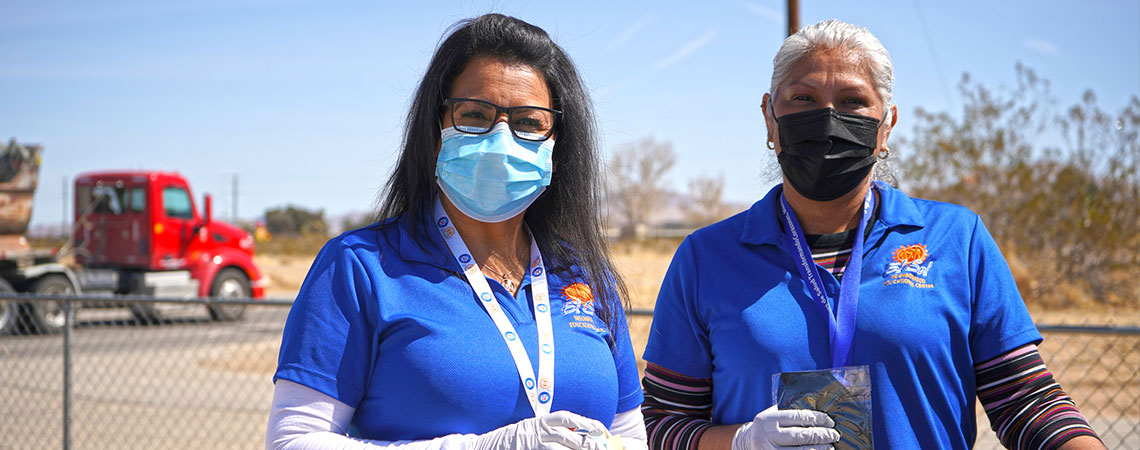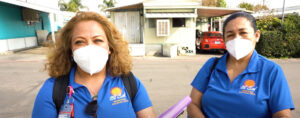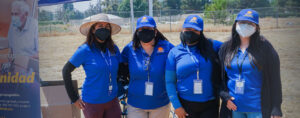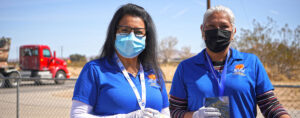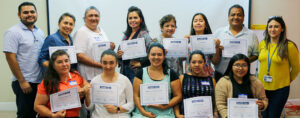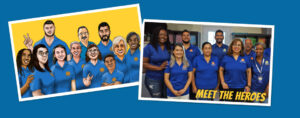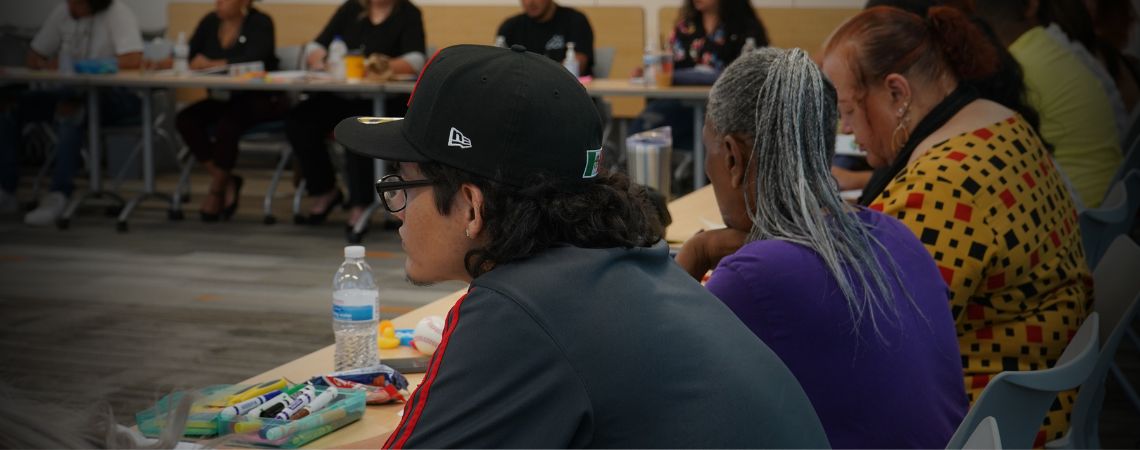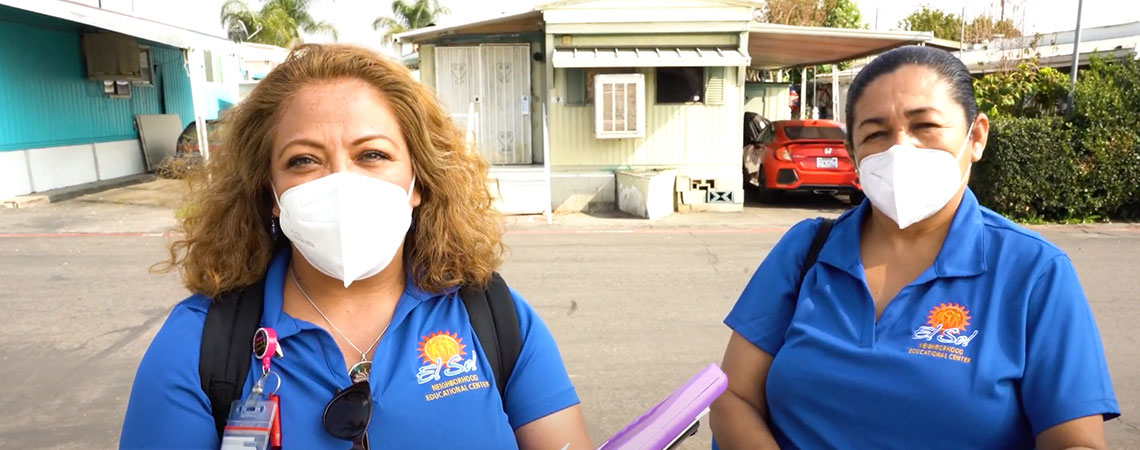Community health workers (CHWs), also known as Promotoras de Salud in Latinx communities, are trusted, knowledgeable paraprofessionals who help their communities achieve health and well-being. Since 1960, 1 they’ve worked in neighborhoods and communities to address a myriad of health and social needs. They use their understanding of cultural norms to provide relevant health information and education to help community members work through the barriers they face when addressing complex issues such as navigating the health care system, domestic violence, housing, and accessing affordable fresh and nutritious foods. 2 Public health leaders view CHW’s as particularly effective in addressing the social determinants of health, which are broad, underlying, contributing factors of health inequities, and complementing healthcare’s focus on disease interventions.
Angelica Baltazar, president of the Inland Empire Health Plan Foundation, and former Executive Director of San Antonio Regional Hospital’s Lewis-San Antonio Healthy Communities Institute, values CHWs as an integral part of effective healthcare pipelines.
Having integrated CHW’s into San Antonio’s Know Your Numbers chronic disease prevention program, she saw first hand how they recruited and connected hard to reach residents with education, insurance resources, and free biometric screenings provided by clinicians.


“CHW’s can and should be the first point of contact for patients to connect them to resources that address their specific socio-economic circumstances. I veiw CHW’s as a critical first step to provide informed, warm handoffs to patients directly into the healthcare system,” Baltazar said.
El Sol Neighborhood Educational Center
Since 1991, El Sol has served low status communities in the Inland Region through the deployment of CHW’s who provide education, home visits, emergency response, chronic disease case management and training. El Sol is currently leading exploration of the integration of CHW’s into healthcare systems while maintaining the integrity and focus of the CHW model. El Sol’s training center and curriculum offer guidance for health care leaders, based on our experience with developing the ESNEC CHW model, which has served 16,642 patients in the Inland Empire and provides tools and technical assistance to more than xx health care organizations across the country.

El Sol’s Clinical Integration Programs: Ontario Health Center Integration Project::
partnership with San Antonio Regional Hospital, Healthy Ontario and The Social Impact Artists, El Sol embedded CHWs into the San Bernardino Department of Public Health’s Ontario Health Center, a Federally Qualified Health Center, and provided education and case management services to 142 underinsured people. CHW’s held space in the clinic, but worked directly in the community. Over 12-months, patients achieved:
56% improved their glucose
44% improved their Blood Pressure
38% improved their Total Cholesterol
56% lost weight (<1 pound)
38% of returning participants were prediabetic upon entrance into the program

Asthma Remediation Program:
El Sol deployed xx promtores to conduct 1,064 home visits in Riverside County to provide asthma education, prevention, treatment and home surveillance. 84% of participants were referred by healthcare professionals. We collaborated with [insert names of hospitals here]. Over xx months, we achieved the following results:
Promotores trained 16,500 parents/caregivers in respiratory health strategies
96% improvement in asthma management
69% reduction in Emergency Room visits

Lessons learned: The Penn Center for Community Health Workers 5 and El Sol’s integration projects find that the challenges facing effective integration can be organized in 4 ways: agenda, identity, scope of work, and administration. Integration efforts benefit from policy adoption that supports comprehensive equity goals over a narrow focus on economic drivers.
Agenda: Preserving an identity as a CHW means not allowing the systems to set the expectations of how CHWs serve– CHW’s and CBO’s wisdom guides this process. While hospitals may focus on their Triple Aim, (Care, Health, Cost) CHWs may possess a broader agenda that includes providing social support and addressing patients’ resource inequities—poverty, housing, and education—that lead to health inequities. Therefore it’s critical that systems, community organizations and CHW’s co-create integration agendas with shared key performance goals before and during integration. 6
Identity: Baltazar recommends that “hospitals create community jobs and hire CHW’s from the communities they serve. These trusted leaders understand their communities in ways we cannot and complement the skills and training of clinicians and healthcare workforce,” she says. Public health experts agree that centering residents in this role as an extension of healthcare walls will preserve the identity of this valued service.
Scope of Work: When attempting healthcare system’s integration, some CHW’s have expressed frustration and a sense of powerlessness amidst the large “machine” that is healthcare. CHW’s power and impact result from their ability to listen, build trust, and solve complex social challenges. If healthcare attempts to “medicalize”7 CHW’s into performing clerical tasks (scheduling, medication reminders, etc.), a CHW’s function and identity can become lost.
Administration: El Sol’s clinical integration challenges have resulted from supervision of CHW’s and data alignment. Fajardo recommends that systems engage CHW organizations to train their workforce as supervisors. Training for CHW supervisors is crucial, and should include training in popular education and the unique roles and needs of CHWs. Data management provides another frontier for learning. Our Ontario Health Center project used grant and systems’ dollars to invest in a public facing data repository. CHW’s used Ipads to input data, and a central administrator managed the platform. Policy opportunities exist to further explore how to connect CHW’s SDH data into electronic health records.
“CHW’s have earned the right to their title, often by virtue of very challenging life experiences such as poverty, violence or incarceration. People who lack these experiences may find it harder to establish trust with patients, offer practical guidance, or provide non-judgemental support.” – Cheryl Garfield, CHW, and Sheya Kangovi, MD, MS, Penn Center for Community Health Workers
Training for Managers and Supervisors
El Sol has developed a comprehensive 24-hour training for supervisors to better understand the CHW/Promotores model. Trainees learn best practices in implementing CHW programs and also strengthen the necessary supervisory skills to support CHWs who are deployed throughout the community.
Next Steps:
El Sol was selected as 1 of 4 regional leads of the California Community Health Worker and Promotor Workforce Capacity-Building Collaborative Program funded by the California Health Care Foundation. We will center CHW’s in integration strategies to ensure that the transformative CHW model is preserved as an asset that brings added value to CalAIM Community Support components. Contact Alex Fajardo, Executive Director, @alexfajardo@elsolnec.org to partner.
[1] https://www.annualreviews.org/doi/10.1146/annurev.publhealth.031308.100300
[2]https://www.healthaffairs.org/do/10.1377/forefront.20190507.746358/full/
[3]https://www.healthaffairs.org/do/10.1377/forefront.20190507.746358/full/
[4]https://www.healthaffairs.org/do/10.1377/forefront.20190507.746358/full/
[5]https://www.healthaffairs.org/do/10.1377/forefront.20190507.746358/full/
[6]https://www.healthaffairs.org/do/10.1377/forefront.20190507.746358/full/
[7]https://www.healthaffairs.org/do/10.1377/forefront.20190507.746358/full/

